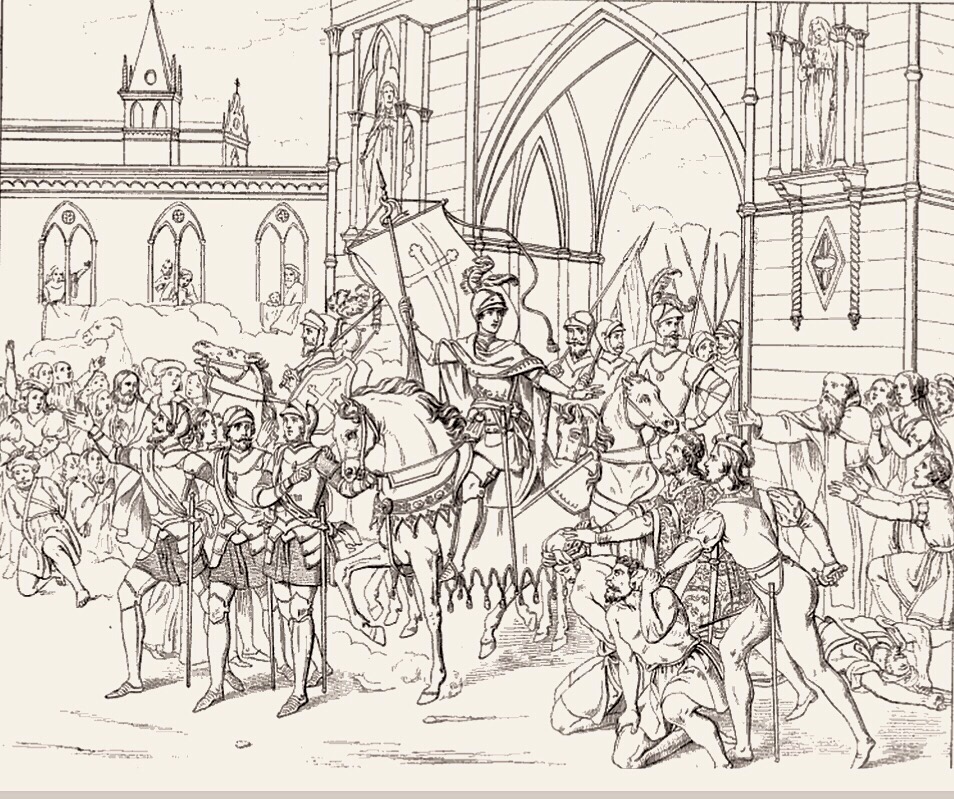As the very educated artist that he was, Michele Panebianco knew the history of his city well and thus the tradition whereby Count Ruggero entered the city of Messina on the back of a camel.
When he depicted this episode in a transparency for the Festivity of the Assumption in 1842, he depicted the Count in the centre of the scene riding a steed, painting a camel at the back of the scene
to evoke the mount the Count was traditionally recalled to have ridden that day.
Through Panebianco’s work, the camel remained in the iconographic tradition of commemoration of the illustrious entry of the Norman into the City of Messina.
But once upon a time, the camel was also a scenographic piece – in the shape of the animal and covered by real camel hide – which, every 12th August, for the Feast of the Assumption was part of the parade along with the Giants and the Vara. Carried around by two men hidden within, the camel was a predator, which assailed passers by agressively. All around this mechanically moved sculpture of a camel, walked strangely dressed people, whose dances and costumes imitated the Saracens.
The phony camel -which perhaps alluded to the levies collected during the Arab reign (which were carried away on the backs of camels), was seen in Messina for the last time in 1842, that is, in the year in which King Ferdinand II witnessed these remarkable festivities.
The bogus camel disappeared from the Feast of the Assumption parade and was destroyed, it seems, in 1850. Memory of this can be found in the studies carried out by Giuseppe Pitrè, which connected it to the Feast of Saint Rocco in Butera. Even today ,”U Camiddu” (the Sicilian term for camel) can be seen in the parade in the town of Casalvecchio Siculo, for the Feast of their patron saint, Onofrio, which is celebrated every September. Camels, however, do appear in other folkloristic festivals and it is difficult to decipher both the origin and symbolic meaning.
The notebooks with Michele Panebianco’s sketches withhold many drawings of camels. The preparatory drawings are particularly precious for those who want to get to know, along with the artist’s production, his inner self. At the same time they are rich in information retracing civic history documented by the painter himself.
The body of works, preserved until now in a private collection, will be divulged by the Michele Panebianco Research Centre and by it’s scientific committee. The collectionist has entrusted the study of this remarkable figure and the works of this accademic artist in his epoca to this resarch group.

